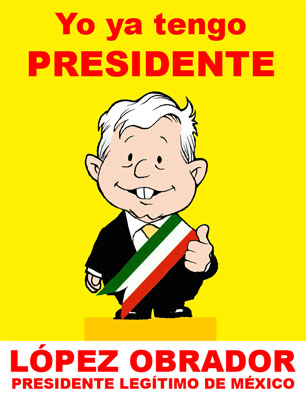CARTA A... THE WALL STREET JOURNAL
Date: November 1, 2006 9:03:37 PM EST
To: Wsj.ltrs@wsj.com
Subject: Letter to the Editor
November 1st, 2006
Letters to the Editor
The Wall Street Journal
200 Liberty Street
New York, NY 10281
Wsj.ltrs@wsj.com
Dear Sir,
In your column yesterday about the seizure of the city of Oaxaca by Mexican federal forces it is stated that Mexico’s government has been reluctant to use force since 1968 when “student protesters” were killed in a crackdown in Mexico City. First of all, the massacre of Tlatelolco in 1968, is one of the darkest chapters of Mexican modern history, in which hundreds, some say thousands of citizens, protesters and passerby’s alike, including children, were massacred by the Mexican army and police. If the government of Mexico had been reluctant to openly use force since, that must have ended earlier this year. On May 4th, the Federal Preventive Police (PFP), which is essentially the army in police uniform, stormed the town of San Andres Atenco, nearby Mexico City, in an open display of police brutality, and blatantly violating human rights. The Mexican ombudsman released a report on October 16th which indicates the police abuses which occurred in Atenco, including arbitrary detentions, brutal beatings, inhumane and degrading treatment, illegal searches and entry, incommunicado detentions, torture, rape (23 documented cases of women raped by the police), and murder (two people killed by direct police fire).
The government of Mexico had also used force upon unarmed citizens either directly in complicity with local and state police, as in the case of the massacre of Aguas Blancas in June of 1995 in which 16 peasants were killed, or indirectly with the use of paramilitary forces as in the case of the massacre of Acteal in December of 1997 in which 45 people, including women and children, were assassinated. The seizure of Oaxaca last Sunday marks the second time that government uses force against the unarmed citizens of Oaxaca in the current year, first by the local and state police during the summer, which sparked the support from the overall population of Oaxaca to the teacher’s union and which originated the people’s demand for the governor’s resignation, and now by the federal police.
As further clarification to your article, it should be noted that the government of Vicente Fox and his party, the PAN, were reluctant to act against the corrupt and authoritarian governor of the state, a PRI strongman, for fears that PRI lawmakers, in retaliation, would walk out of the inauguration of president-elect Calderon on December 1st joining the PRD, which holds at least a third of the seats in congress and which has vowed to boycott Calderon’s inauguration that day, leaving congress with not enough quorum for Calderon to be sworn-in. Calderon is struggling for legitimacy after winning by a thin margin in an election last July surrounded by widespread allegations of fraud.
The lack of a timely response by the Mexican federal government and congress allowed for the deterioration of the situation and allowed Ulises Ruiz, the governor of the state, to use his thugs against the unarmed people of Oaxaca in systematic killings and kidnappings including the assassination of NY freelance journalist Brad Will.
With protests in front of Mexican consulates and Embassies around the US and the world and outrage by those of us in and out of Mexico who follow what is going on there, I frankly don’t see how this can benefit the image of an already unpopular president-elect who won an election in which almost two thirds of the 40 million Mexican voters voted against him.













0 Comments:
Publicar un comentario
<< Home